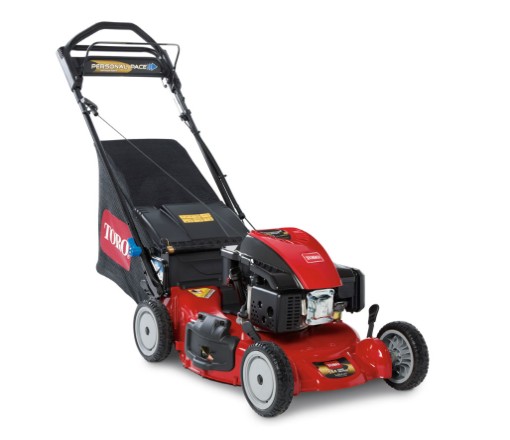Lack of rainfall and extreme heat of late summer means lawns and landscaping need special attention. Remember to put as little stress on your lawn as possible.
- Choose a time as early in morning as possible to mow grass. Grass loses moisture when the plant is cut and needs time to recover. Cooler temperatures and morning dew aid in recovery.
- Raise your mowing deck to a high level. Soil is stressed during dry conditions. Taller grass helps hold any moisture against the roots and provides the most shade for the soil.
- Reduce foot traffic especially around driveways, curbs and sidewalks. The heat retained by concrete often results in yellowing grass and patches on your grass. Avoid stresses grass by staying on the concrete and don’t walk on your turf.
- Make note of weaknesses in your lawn. When you feed your lawn in the fall, you’ll want to pay special attention to stressed areas-bare patches, yellow spots and locations where weeds are growing. These areas will likely recover when milder temperatures and increased rain returns. Aerating and feeding these areas during the fall will strengthen your entire lawn for the spring.
Prepare Your Lawn for Fall Feeding
August typically reveals the most stressed areas of lawns. Some simple chores will boost the results of your fall feeding.
- Identify and remove weeds. Many weeds are hot season grasses. They thrive while cool season grasses become dormant. These weeds rob your lawn of nutrients and may result in bare patches. Removing these weeds early gives your lawn a better chance to recover in the fall.
- Dethatch your lawn. Excess thatch on the soil surface prevents water, oxygen and nutrients from feeding the root system.
- If you plan to seeding throughout the fall, then you may consider aeration in August. If you do not plan to seed in the early fall, wait until September or October to aerate your lawn.
- Level low spots. Areas impacted by erosion or compaction may benefit greatly from added lawn soil.
- Mulch is essential to cooling landscape plants. Loosen compacted mulch beds and repair eroded areas.
Best Irrigation Practices
If you irrigate your lawn, make a plan to water in the morning. Grass root systems will soak up the nutrients and any remaining water will evaporate as the day warms. Watering during the heat of the day may damage plant (especially landscape flowers and shrubs). Irrigating too late in the day may result in excess water remaining on the soil surface or on plants. Mold and mildew may result during these humid, hot months. Most notably, some yellowing of grass in August is normal and part of a healthy lawn’s seasonal cycle.
Be Alert of Pests
Mosquitoes are not the only late season pests to ruin your outdoor enjoyment. Aphids, whiteflies and other insects may attack your flowers. As part of your early morning routine, sprinkle water on these plants and inspect for any damage from pests. If you use chemical treatments, always read the label and know that most are less effective in temperatures above 85 degrees.


Recent Comments